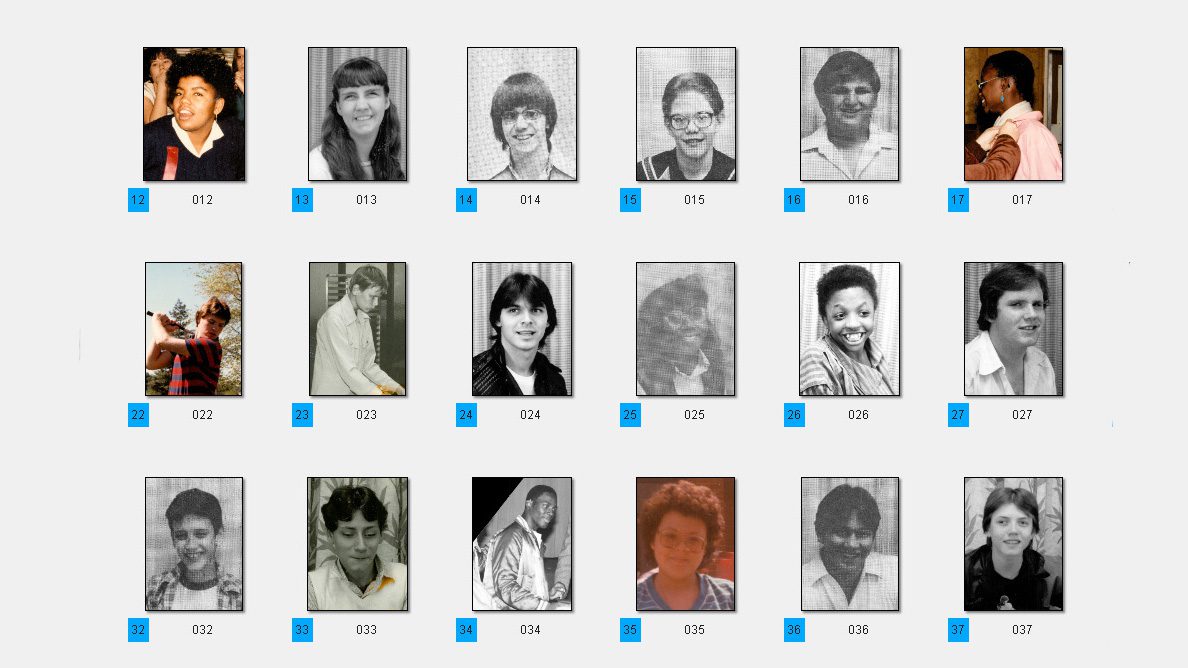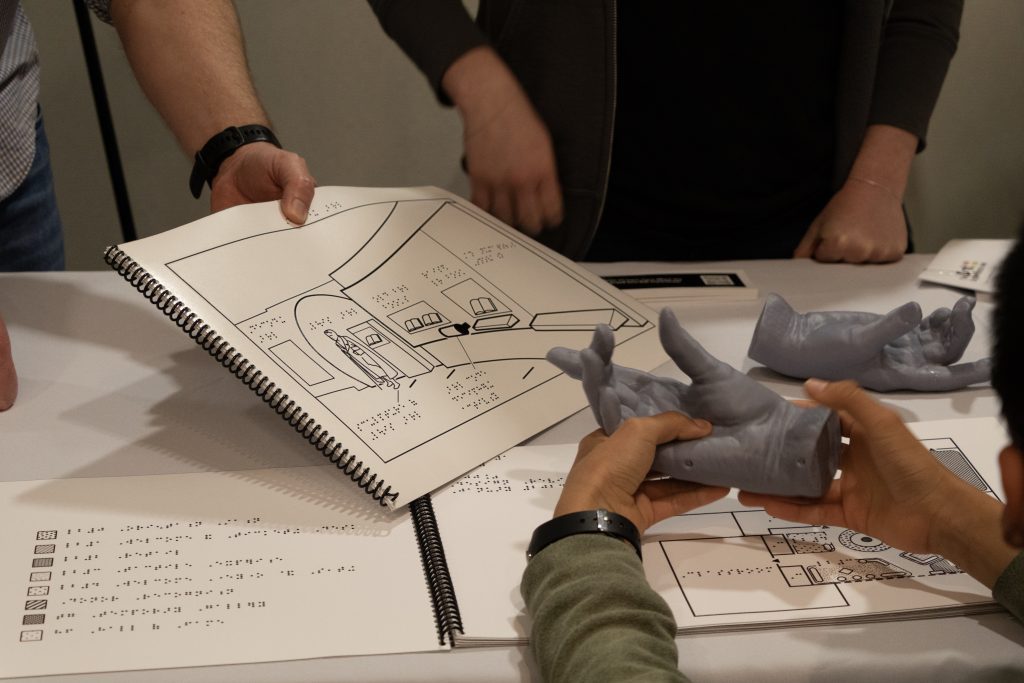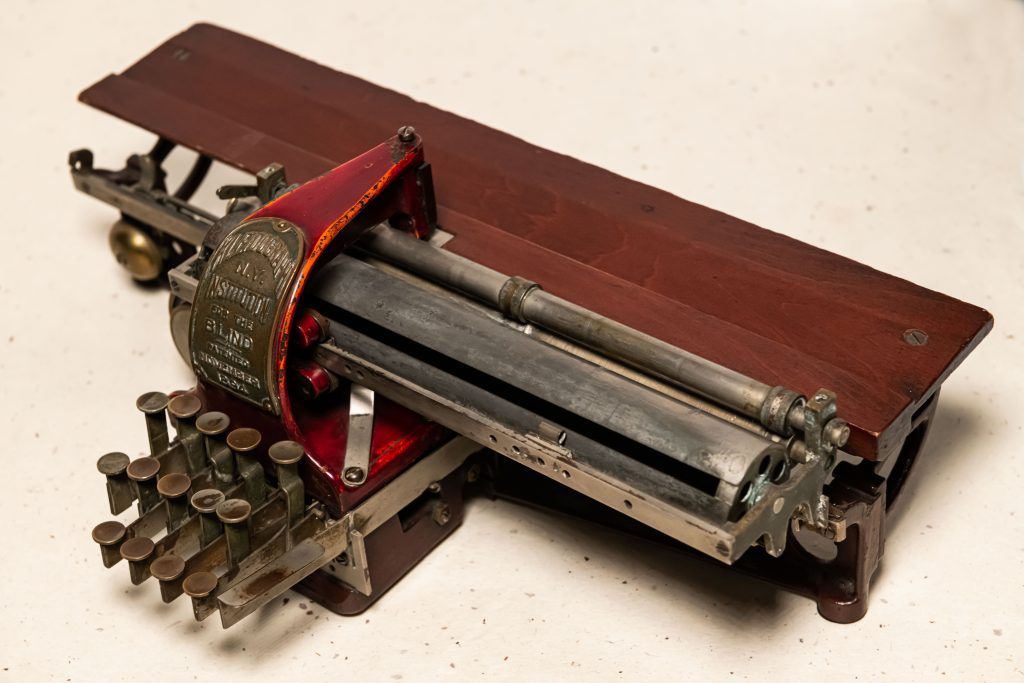Who Do You Know and How Did You Meet Them?

Since the museum closed for The Dot Experience renovation and expansion, I’ve been working hard on the photo collection donated by the Kentucky School for the Blind Alumni Association. There are more than ten thousand prints and negatives ranging from the 1940s through the 2000s and it’s going to take months—maybe years—to get everything described, scanned, and cataloged. Most of the work can be done without thinking too much about it. I write or research or answer emails while opening folder after folder and slipping them into the feeder of our automatic print scanner.
As I came up for air this morning and looked at my screen, I was struck by the picture on it. An entire folder of those little 2×2 inch portraits of smiling children from the 1986-1987 school yearbook. The backs of the prints are coated with that brown wax that you will remember if you served on your newspaper or yearbook staff in high school prior to modern desktop publishing. Yes, kids, you had to send the text copy out to a company that laid it out in columns, cut it out manually, coat it with sticky wax, and “paste up” the page. Amazing, huh?
But I’m looking at these kids and their smiling faces and wondering what happened to all of these folks? What was their journey like after KSB? They would all be in their 50s by now. For some, I know their stories well because they are still in the neighborhood. Lynn Smallwood Florence runs our café at APH and I see her smiling face every day at lunch. Debbie Kuczwara Deatherage is president of our local Lions club and I pass her at the bus stop almost every day as I leave work. Lora Felty Stephens came back to KSB and taught there until retiring last year. Mike McCarty used to work at APH and I see him occasionally. Barbara Martin Henning is a regular in our Braille Reader’s Theatre group. But most of these people are just faces to me. After they left KSB, which serves kids from all over Kentucky, they went home to more schooling and jobs and families, and, well, life.
But the names and the faces, those stick with me. I feel like I have a relationship with these folks, because I see them every day as the photos are fed into the scanner one after another. When I walk down to the café for lunch, I ask Lynn about this one or that one, and she is always surprised. “How do you know her?” she asks. “Well,” I have to admit, “I don’t know-know her, you know?” But I see she ran track, and received an award on KSB Awards Day, and was hit by a water balloon on Field Day, and helped plant a tree on Founder’s Day, and had a minor role in the spring play, and looked great with her date on prom night. I don’t know-know her. But on the other hand, I guess I do. But my knowledge is frozen in time, like all of the faces that look out of historic photographs taken on a particular day at a particular time. That is the magic of photography. It freezes time and saves a small fragment of it. There is a magic in that process, and digital preservation helps us delay the chemical reactions that degrade those old photos. We’ll be able to meet these kids and learn about their lives at KSB long after they themselves are long gone.
Share this article.
Related articles

Defining The Dot Experience: Everything You Need to Know
What is The Dot Experience? The Dot Experience is APH’s re-imagined museum set to open in 2026. Designed with an...

Blindness History Basics: History of Braille Writers
When fifteen-year-old Louis Braille presented his tactile system of raised dots in 1824, he hoped the new system would provide a...

Please Touch! Making Museum Collections Accessible
What do you think of when you hear the words “museum collection?” Artifacts like objects, paintings, photographs, rare books, or...
